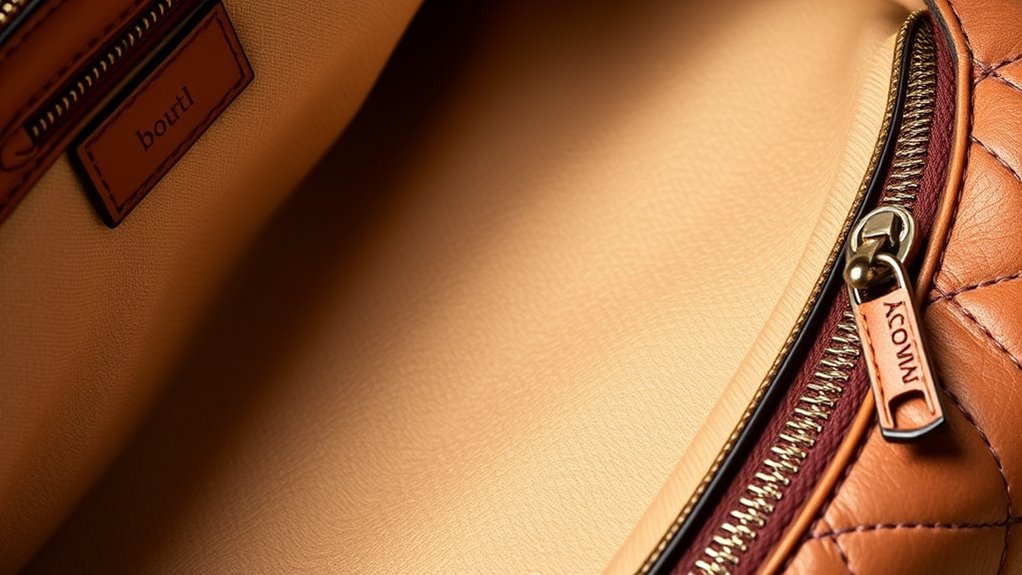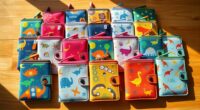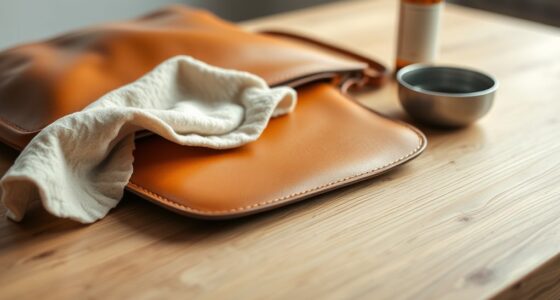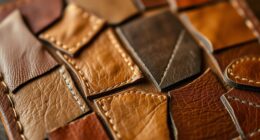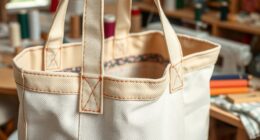To spot a counterfeit designer bag, closely examine the logo for sharp, consistent lettering, perfect alignment, and correct font size. Check the stitching for even, tight seams without loose threads. Feel the materials—genuine leather has a distinct texture and smell, while cheap synthetic looks shiny. Verify serial numbers and authenticity markers, making sure they match brand standards. Authentic bags come from trusted sources, and detailed packaging can also help. If you want to know more, there’s plenty to discover.
Key Takeaways
- Check for consistent, high-quality logo placement, sharp lettering, and correct font style and size matching brand standards.
- Examine stitching for even, tight seams and ensure hardware feels heavy, engraved, and matches brand specifications.
- Verify serial numbers and authenticity markers are correctly printed, well-aligned, and located in known areas.
- Purchase from reputable sources and request proof of authenticity or official verification tools.
- Inspect packaging and dust bags for quality, correct logo printing, and compare with official brand standards.
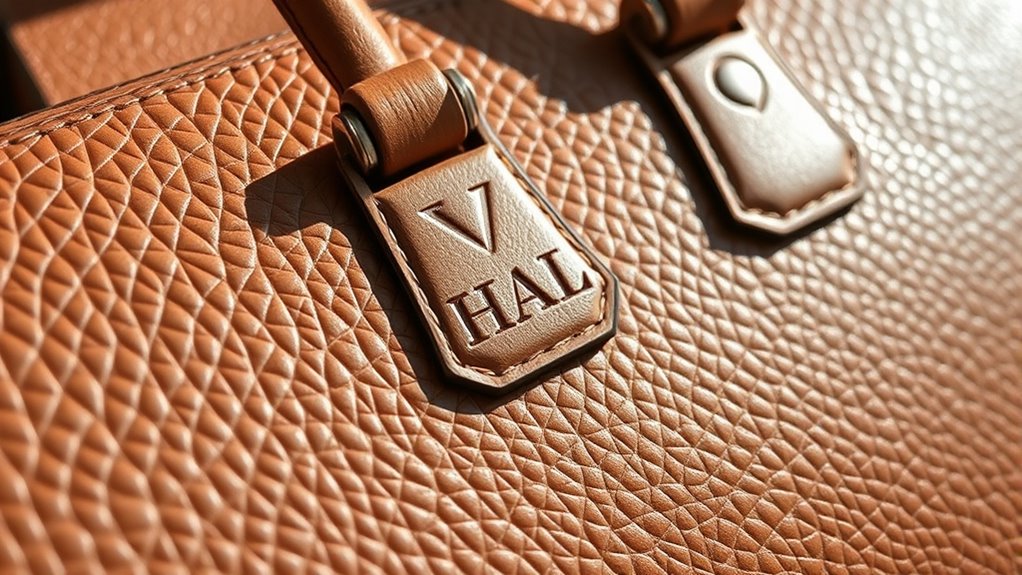
When shopping for a designer bag, it’s easy to be fooled by counterfeit versions that look convincing at first glance. To truly identify a genuine piece, you need to pay close attention to authenticity markers. These are subtle details that brands incorporate to distinguish authentic bags from imitations. For example, check the logo placement; authentic designer bags have precise, consistent logo positioning, with clean, sharp lettering. The font style and size should match the brand’s official standards exactly. Also, look at the stitching—quality craftsmanship means even, tight stitches without loose threads or uneven lines. Authentic bags often feature high-quality hardware; it should feel heavy and substantial, often engraved with the brand’s name or logo. The materials used are equally important—real leather has a distinct texture and smell, and synthetic materials tend to look shiny or cheap in comparison.
Another key step in spotting a counterfeit is purchase verification. Always buy from reputable sources like official boutiques, authorized department stores, or trusted online platforms that guarantee authenticity. If you’re purchasing secondhand, request proof of purchase, such as receipts or certificates of authenticity. Many brands now offer online verification tools where you can input serial numbers or product codes to confirm an item’s legitimacy. Be wary of sellers who are reluctant to provide detailed information or proof of purchase; this could be a red flag. When examining the bag in person, inspect the serial number or hologram sticker carefully. Authentic bags usually have a serial number that’s consistent with the brand’s coding system and is cleanly stamped or printed. Counterfeiters often make mistakes here, like misaligned characters or inconsistent fonts.
Pay attention to the packaging and dust bags too. Genuine designer bags come with high-quality dust bags that feature the brand’s logo properly printed or embroidered. The packaging should feel luxurious, with no misspellings or flimsy materials. If the seller claims the bag is vintage or rare, verify its authenticity through official brand databases or expert appraisals. Checking for authenticity markers can help you distinguish genuine from fake items more effectively. Never rely solely on appearance; counterfeiters get better at mimicking design, but they often falter on these authenticity markers and purchase verification details. By meticulously checking these aspects, you substantially reduce the risk of buying a fake and ensure your investment is genuine.
Frequently Asked Questions
Can You Tell if a Designer Bag Is Fake by Its Smell?
You can’t reliably tell if a designer bag is fake by its smell alone. While a scent analysis or smell test might reveal unusual odors like chemical or plastic smells, counterfeit bags often use cheap materials that can emit strange or harsh odors. However, smell isn’t a definitive indicator. Focus on other details like stitching, logos, and materials to accurately identify a genuine designer bag.
Do Counterfeit Bags Have Different Stitching Patterns?
Counterfeit bags often boast different stitching patterns, making you think they’re authentic—until you notice stitching inconsistencies and pattern irregularities. It’s ironic how fake bags try to mimic luxury, yet their uneven stitches and irregular patterns give them away. Pay close attention to the stitching details; genuine designer bags maintain precise, uniform stitches, while counterfeits often fall short, betraying their falsehood through sloppy craftsmanship.
Are There Specific Fonts Used in Authentic Designer Logos?
Yes, authentic designer logos use specific fonts and have precise logo alignment. You’ll notice font differences in genuine bags, with consistent spacing and clean lines. Counterfeit bags often have fonts that appear off, blurry, or uneven. Pay close attention to logo placement; authentic bags ensure perfect logo alignment, while fake ones may have crooked or uneven logos. These subtle details help you identify genuine designer bags easily.
How Does the Weight of a Fake Bag Compare to Real?
They say “you get what you pay for,” and this holds true with designer bags. Fake bags often feel lighter or uneven because of poor material consistency and cheaper manufacturing defects. Authentic bags have a balanced weight, reflecting quality craftsmanship. If a bag feels unusually light or heavy compared to what you expect, it’s a red flag. Trust your instincts and compare weights carefully to spot a counterfeit.
Can Serial Numbers Help Verify a Designer Bag’s Authenticity?
Yes, serial number verification and authentication codes can help you verify a designer bag’s authenticity. You should check if the serial number matches the format used by the brand and confirm it’s consistent with the bag’s style and production year. Authentic bags often have unique authentication codes that you can verify with the brand or through trusted authentication services. Always compare the serial number details with official resources for the best results.
Conclusion
Now that you know what to look for, you can confidently spot a fake designer bag before it catches your eye. Picture holding a genuine piece, feeling the weight of quality and examining every stitch, every logo. When you take a closer look, the counterfeit quickly loses its shine, revealing its true nature. Trust your instincts and these tips—your keen eye will guard you from falling for a convincing imitation, turning your bag hunt into a confident, rewarding experience.
